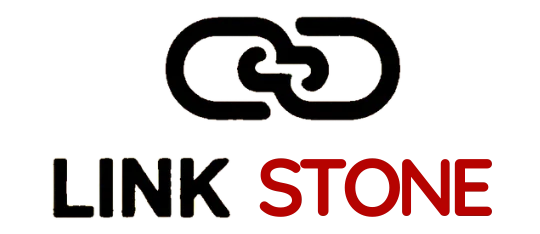The Ultimate Secret to Buying Backlinks Without Getting Penalized
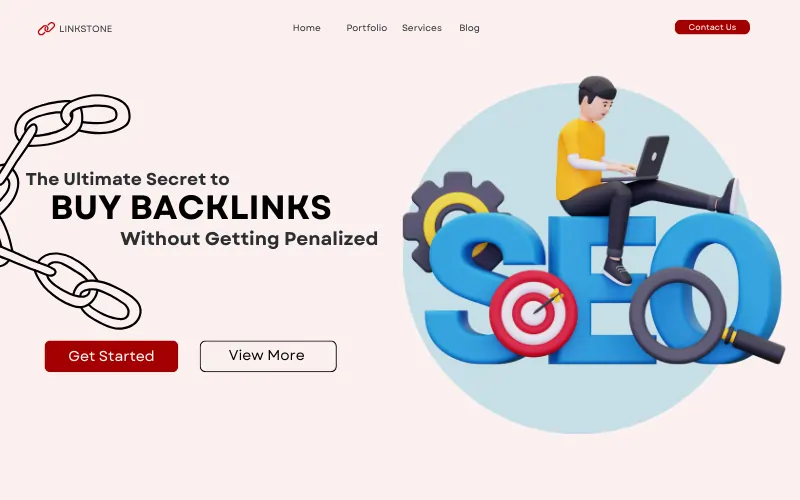
Disclaimer: Paid links intended to manipulate rankings may violate Google’s guidelines. This article explains how backlinks work, the risks of buying them, and how to choose safe, value-driven strategies that actually help your SEO in the long run. What Does Buying Backlinks Really Mean? A backlink is simply a link from another website pointing to yours. In SEO, backlinks act as signals of trust and authority.Buying backlinks means paying a publisher, freelancer, or agency to place your link on their website, usually inside an article, blog post, or resource page. These links can transfer authority (“PageRank”), boosting your visibility in Google search results. The risk? If the links are manipulative, irrelevant, or spammy, Google may devalue them or issue a manual action against your site. Why Businesses Still Pay for Backlinks Despite the risks, many businesses invest in backlinks because: Pro Tip: Paid links should never be your only link-building tactic. Combine them with digital PR, guest posting, HARO, and content marketing for a balanced profile. Types of Backlinks You Can Buy Not all paid links are equal. Here’s a breakdown: Guest Post Links You or the publisher creates an article with your link included. This is one of the most natural-looking and widely accepted formats. Niche Edit Links Your link is added to an existing article that’s already indexed and ranking. When done on a relevant, high-traffic site, these work well. Homepage or Sidebar Links Links are placed in a site’s navigation, footer, or sidebar. These can pass authority but may look unnatural if overused. Authority Domain Links (e.g., EDU/GOV) Contrary to myth, .edu or .gov domains aren’t automatically more powerful. Relevance and quality matter more than TLD. How to Spot High-Quality Backlinks A strong backlink is like a premium investment; it costs more but delivers lasting results. Before you buy, check: Avoid: Private Blog Networks (PBNs), auto-generated content, directories stuffed with unrelated links, or sites with high spam scores. Anchor Text Strategy: How to Stay Safe The anchor text, the clickable part of a link, is a major ranking signal. Over-optimisation is a common cause of penalties. A natural distribution might look like this: Spread your anchors across different pages, not just your homepage, to build a natural profile. How Much Do Backlinks Cost? Pricing varies by quality, niche, and traffic. Here’s a realistic breakdown: Link Type Price Range Value Blog Comments / Forum Links $5 – $30 Low value, rarely worth buying Low-Tier Guest Posts $50 – $150 Decent for small sites, check quality High-Authority Guest Posts $200 – $500+ Strong SEO impact if the site has traffic Niche-Relevant Authority Blogs $300 – $1,000+ Best for long-term ROI Rule of Thumb: If someone offers hundreds of backlinks for cheap, you’re buying trouble. Backlink Packages: What to Check Before Buying When considering bulk deals or packages: ✅ Relevance: Sites must align with your niche.✅ Traffic Proof: Verify real organic visitors.✅ Reporting: Ask for live URLs and full reports, not “guarantees.”✅ Replacement Policy: Links should be replaced if removed.✅ Content Quality: All articles should be original and well-written.✅ Anchor Diversity: Packages should avoid repeating exact-match keywords. ❌Avoid packages that promise “1,000 links in 7 days” These are toxic footprints. Safer Alternatives to Buying Backlinks If you’re cautious about penalties, mix paid strategies with safer link-earning methods: Monitoring & Risk Management After acquiring links: FAQs About Buying Backlinks Is buying backlinks illegal? No, it’s not against the law, but it may violate search engine guidelines. Can Google penalise me for buying links? Yes, if links are manipulative, irrelevant, or spammy. That’s why vetting is critical. What’s safer, paid or free backlinks? Free links (guest posts, PR mentions, organic citations) are safer. Paid links can work if they’re natural, relevant, and well-managed. Should I always buy followed links? Followed links pass authority, but sponsored or UGC links can still build visibility, traffic, and brand signals. Wrapping It Up Buying backlinks can speed up your SEO, but it’s not a shortcut without risks. Done carelessly, it can harm your rankings. Done strategically, it can strengthen your authority and visibility. Key takeaways: Treat backlinks as a long-term investment, not a quick hack. Get it right, and your website will build authority steadily without Google breathing down your neck.
Free Keyword Rank Checker Tools To Track Google Rankings Easily
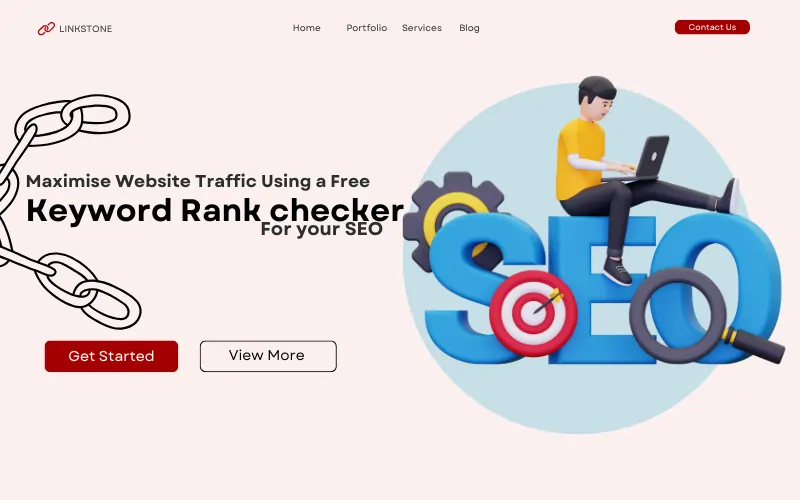
Discover the best free keyword rank checker tools that help monitor website performance and improve SEO strategies. These tools provide instant ranking data, competitor analysis, and keyword insights to enhance website visibility and traffic. By using these tools, you can easily understand which keywords work best, track your competitors, and make smarter SEO decisions to boost your search rankings. Why Use Free Keyword Rank Checker Tools Free keyword rank checkers offer essential insights into search performance. They highlight top-performing keywords, identify areas for improvement, and provide actionable data for better SEO planning. These tools help website owners track progress, make informed decisions, and stay ahead of competitors by continuously monitoring search trends. Real-Time Ranking Updates Most free tools provide immediate updates on keyword positions. Users can quickly spot changes and optimise content accordingly, allowing for timely adjustments and better SEO performance. These insights also help prioritise high-impact changes for faster results. Identify High-Traffic Keywords These tools show which keywords drive the most visitors, helping focus efforts on terms that bring measurable results. They highlight which pages are performing well and reveal new opportunities for content improvement. By understanding this, website owners can prioritise actions that truly impact traffic and conversions. Device-Specific Insights Compare desktop and mobile rankings to optimise content for different devices and enhance user experience. This allows website owners to see which platform performs better, adjust their design and content accordingly, and ensure visitors have a smooth experience on any device. How Free Keyword Rank Checkers Work They are simple to use, requiring minimal technical knowledge. Users input a domain and keywords to instantly get detailed ranking information, competitor comparisons, SERP insights, and actionable recommendations that guide effective SEO strategies. Enter Domain and Keywords Input the website URL and the keywords you want to track. The tool quickly analyses the data and presents easy-to-understand ranking results, showing exactly where each keyword stands on Google and offering actionable insights for improvement. Explore SERP Features Check rankings along with additional SERP features such as featured snippets, knowledge panels, and other Google search elements for a more comprehensive understanding, allowing better optimisation and strategy adjustments. Competitor Analysis Compare rankings against competitors to find gaps and opportunities for improvement. This helps uncover hidden weaknesses in your strategy and identify areas where your website can outperform others, providing actionable steps to enhance overall SEO performance. Benefits of Free Keyword Rank Checker Tools These tools save time, provide actionable insights, allow continuous monitoring to adapt strategies based on search trends, and help identify new growth opportunities. They also enhance decision-making by offering comprehensive visibility into keyword performance and search engine dynamics. Data-Driven SEO Strategy Use the insights to optimise content, improve underperforming pages, and strengthen overall SEO. Additionally, these insights help in refining keyword targeting, monitoring long-term trends, and making informed decisions to maximise website visibility. Focus on Effective Keywords Discover which keywords drive traffic and engagement to boost website performance. These insights allow website owners to strategically focus on high-impact keywords and improve SEO outcomes effectively. Tracking top-performing terms regularly ensures sustained growth and informed decision-making. Automated Tracking Saves Time Automated rank tracking reduces manual work, allowing more time for content and strategy improvement. It provides consistent and accurate tracking of multiple keywords, helps spot trends quickly, and ensures that SEO adjustments are timely and effective. Top Free Keyword Rank Checker Tools Here are some popular free tools for tracking keyword rankings, each offering unique features, ease of use, and reliable performance for tracking keyword positions and gaining insights into SEO effectiveness: Google Search Console: Monitor keyword impressions, clicks, and average positions. This tool provides detailed insights into how your keywords are performing on Google. It also helps identify trends and opportunities for optimization. Ubersuggest: Track keywords, analyze SEO, and compare competitors. You can discover keyword ideas, track your site’s rankings, and get content suggestions to improve your SEO strategy. SERProbot: Simple rank tracking over time. It allows you to monitor your keyword positions regularly, helping you understand changes in your search visibility and adjust strategies accordingly. WhatsMySERP: Monitor multiple keywords daily for free. This tool supports tracking across various search engines and locations, ensuring you stay updated on your keyword performance every day. SEOptimer Free Rank Checker: Check keyword rankings with SEO suggestions. Beyond just tracking, it offers actionable recommendations to improve your search presence and overall site optimization. SmallSEOTools Rank Checker: Provides basic free keyword tracking. It is user-friendly and suitable for quick checks, helping beginners or small businesses monitor their keywords effectively. Ahrefs Free Keyword Rank Checker: Limited free version for quick checks. It provides insights into keyword performance and competitor rankings, making it useful for initial SEO analysis or quick validations. SEO Tips When Using Free Keyword Rank Checkers Optimise content and backlink strategies based on keyword ranking data. Use insights to adjust keyword targeting and refine your SEO campaigns. Monitor trends to spot opportunities and improve overall search performance. Choose Low-Competition, High-Volume Keywords Focus on keywords that are easier to rank for but bring significant traffic. Look for niche-specific terms with manageable competition. Combine short-tail and long-tail keywords to maximise reach and relevance. Improve Content and Backlinks Use ranking insights to refine your content quality and link-building approach. Additionally, analyse user engagement metrics to see which topics resonate most. Adjust your strategy regularly based on both ranking and traffic data for maximum impact. Regular Monitoring Consistently track keyword performance to adjust strategies and maintain growth. Review trends weekly to spot emerging opportunities. Make data-backed adjustments to content and SEO tactics for maximum results. Getting Started with Free Keyword Rank Checkers Setup is quick, results are instant, and tools are free for everyone. You can begin analysing your SEO performance within minutes. No technical expertise is needed, making it ideal for beginners and experts alike. Easy Setup Enter your domain and keywords to start tracking immediately. Add as many keywords as you want to monitor multiple aspects of your SEO. This allows for comprehensive tracking of performance trends
The Ultimate Guide to Free Guest Posting for SEO and Traffic
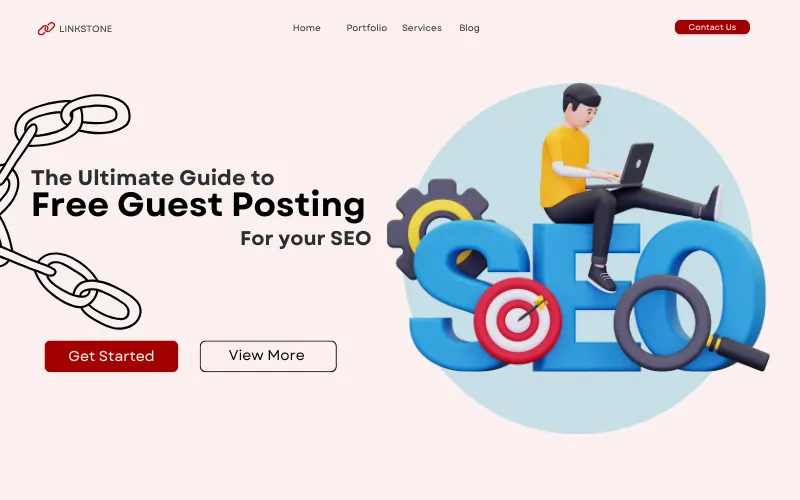
Free Guest posting is one of the most effective ways to grow your online presence, build authority, and improve SEO. Think of it like getting a feature in a popular magazine: your content reaches a new audience, and you earn valuable backlinks that boost rankings. This guide will walk you through what guest posting is, why it works, how to find free opportunities, and how to make the most of each placement. We’ll keep it simple, clear, and actionable so anyone can follow along. What Is Free Guest Posting and Why Does It Matter Guest posting means writing an article for another website in exchange for exposure and a backlink to your site. It’s a win-win: the host site gets free quality content, and you get access to their audience. According to SEO experts, backlinks from reputable sites are still a top-ranking factor, making guest posting a smart long-term strategy. Benefits of Guest Posting Guest posting offers multiple advantages that go beyond just getting a backlink. It’s a strategic move to expand your reach, position yourself as an expert, and open doors to future opportunities. How to Find Free Guest Posting Opportunities There are thousands of websites looking for fresh content. The key is knowing where and how to look. Whether you’re in a niche industry or a broad market, the right search techniques and platforms can open doors to valuable collaborations. Consistency in outreach and research will help you uncover hidden opportunities others might overlook. Using Google Search Operators Google search operators are special commands that help you find guest posting opportunities faster and more precisely. By using them strategically, you can uncover websites that actively welcome contributors and filter out irrelevant results. Checking Social Media Platforms Social media can be a goldmine for finding guest posting opportunities if you know where to look. By actively following industry hashtags, joining relevant communities, and networking with bloggers, you can uncover collaborations you might miss through search engines alone. Exploring Curated Lists Curated lists are a time-saver because they compile multiple guest posting opportunities in one place, often organised by niche or authority level. These resources can help you focus your outreach on high-quality sites instead of spending hours searching blindly. How to Choose the Right Website for Your Guest Post Not all guest posting sites are worth your time. Pick those that offer real value. Aim for platforms that align with your niche, have engaged audiences, and maintain consistent publishing standards for the best long-term impact. Evaluate Site Quality Look for websites with clear editorial standards, relevant and up-to-date content, and signs of genuine audience engagement. These factors indicate the site is well-maintained and respected in its niche. Match Your Audience Pick websites that share a similar target audience so your message reaches the right readers. When your audience aligns, your content feels more relevant and engaging, increasing the chance readers will visit your site. Consider Long-Term Value Focus on sites that can bring repeat traffic and long-term SEO benefits. Choose platforms that nurture long-term relationships, where your content can stay relevant for months or even years, and where audience engagement continues to drive results over time. How to Pitch Your Guest Post Like a Pro A good pitch gets your foot in the door. Make it personal and relevant. Think of it as your first impression; a well-crafted approach can instantly set you apart from other contributors. Show genuine interest in the site and tailor your message so it feels like a perfect fit. Personalise Your Email Address the editor by name and mention a post you genuinely liked. This small effort shows that you have done your research and value their work. It also helps create a more genuine and friendly connection from the start. Showcase Your Expertise Link to a few of your best articles or achievements. This helps the editor understand your writing style and credibility, making them more confident in publishing your work. Suggest Relevant Topics Offer 2-3 unique and valuable ideas that match the site’s audience, ensuring they are timely and engaging. Briefly explain how each topic can benefit the readers and add a fresh perspective to the site’s existing content. Writing a Guest Post That Stands Out Once your pitch is accepted, deliver high-quality, engaging content that captures the reader’s attention from the very first sentence. Make sure your article provides clear value, is well-structured, and leaves the audience feeling they learned something useful. Aim to create a piece that reflects your expertise while fitting seamlessly with the host site’s style and tone. Follow the Guidelines Stick to the required word count, format, and tone. Make sure you understand the site’s specific requirements before you start writing. Following the rules closely not only makes the editor’s job easier but also increases your chances of getting published. Provide Unique Value Share original insights, case studies, or tips your readers can act on immediately. Give examples that are practical and easy to follow so readers can put them into action right away. Optimise for SEO Use relevant keywords naturally, include internal and external links, and format for easy reading. Make sure your meta title and description are clear and accurate so search engines and readers understand your topic right away. After Publishing Your Guest Post Your work isn’t done once the post goes live. This is the time to maximise its reach and ensure it delivers long-term value. Promoting, interacting, and tracking results will help you get the most out of your effort. Promote Your Post Share it on your social channels, email newsletter, and website. Encourage colleagues or partners to share it too for wider reach. Consider repurposing parts of the post into short videos, infographics, or social snippets to keep the promotion going over time. Engage With Readers Reply to comments and questions to build connections. Show appreciation for feedback and encourage ongoing discussion to keep the conversation alive. Engaging regularly helps strengthen trust and makes readers more likely to return for
Best Free SEO Tools to Boost Your Website Ranking in 2025
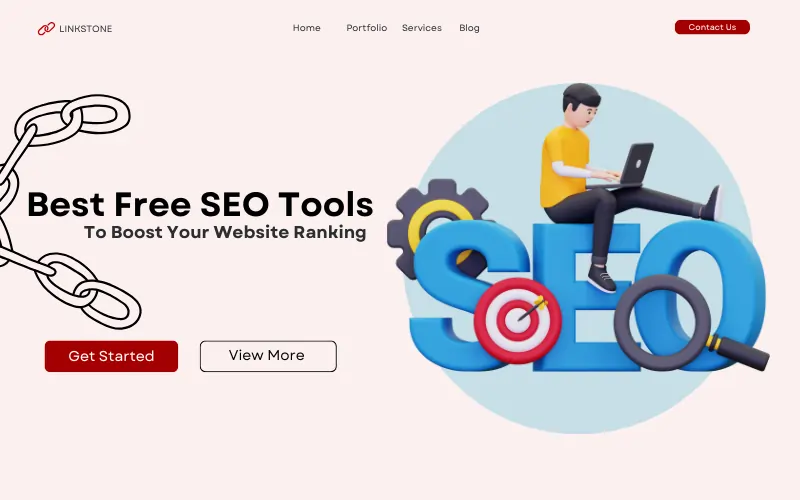
SEO tools help you make your website better so that it can appear higher on Google search results. They give you important information about your site and your competitors. Utilising free SEO tools is an excellent way to begin enhancing your website without incurring expenses. They can also save you time by automating many tasks. Even small improvements can make a big difference in your rankings. What Are SEO Tools and Why Are They Important? SEO tools help you find problems and opportunities for your website. They tell you what keywords to use, check how fast your site loads, and see who is linking to you. Without these tools, it would be hard to understand what changes can help your site grow. They make decision-making easier by showing clear data. This helps you focus on actions that matter most. How Free SEO Tools Can Help Beginners and Professionals Free SEO tools are easy to use and still give valuable data. Beginners can use them to learn the basics of SEO. Professionals can use them to save money while still getting accurate results. They are a great starting point before investing in paid options. Many free tools offer features that can rival paid versions. Best Free Keyword Research Tools Google Keyword Planner: Find Search Volume and Competition Data Google Keyword Planner shows how many people search for certain keywords. It also shows how hard it is to rank for them. This helps you choose the right keywords for your site. It’s a reliable choice for planning SEO campaigns. You can also use it to find seasonal trends in searches. Ubersuggest: Easy Keyword Ideas for All Niches Ubersuggest gives you a list of related keywords for any topic. It also shows traffic numbers and keyword difficulty. It’s simple and works for many industries. The tool is beginner-friendly and updates data often. You can also see content ideas based on popular searches. Keyword Surfer: Keyword Data Directly in Google Search Keyword Surfer adds keyword data right inside your Google search results. This means you don’t need to switch to another tool while searching. It’s quick and convenient for on-the-go research. This saves time when doing quick keyword checks. Moz Keyword Explorer: Discover Keyword Difficulty and SERP Analysis Moz Keyword Explorer helps you find new keywords and check how hard they are to rank for. It also shows what kind of content is already ranking. The interface is easy to navigate for all users. It’s great for exploring niche keywords. QuestionDB: Find Content Ideas from Real Questions QuestionDB collects real questions people ask online. This helps you create content that answers those questions. It’s perfect for generating blog ideas. It can also help you find unique topics with low competition. AnswerThePublic: Discover Search Queries in Visual Format AnswerThePublic shows search questions in a visual map. It helps brainstorm content ideas. The visual layout makes it easy to spot trending topics. It’s especially useful for content marketers and bloggers. Best Free Backlink Analysis Tools Ahrefs Webmaster Tools: Analyse Backlinks and Referring Domains Ahrefs Webmaster Tools lets you see which sites link to yours. It also shows the quality of those links. This helps you plan better link-building strategies. It’s great for spotting harmful links too. SEMrush Backlink Analytics: Track New and Lost Links SEMrush Backlink Analytics helps you see new and lost backlinks over time. This helps you keep track of your link-building progress. You can also find potential partners. It’s ideal for monitoring competitor backlink activity. Moz Link Explorer: Check Link Authority and Anchor Text MozBac Link Explorer shows how strong your backlinks are. It also reveals the anchor text used in those links. This helps in understanding link quality. It’s good for checking the balance between branded and non-branded anchor text. OpenLinkProfiler: Explore Backlink Data for Any Website OpenLinkProfiler is free and gives you detailed backlink information. You can even download the data for analysis. It’s great for tracking competitor links. You can also check which pages get the most links. Best Free SEO Tools for Website Audit & On-Page Google Search Console: Monitor Site Health and Indexing Google Search Console shows how your site is performing in search. It also alerts you to any indexing problems. This helps keep your site running smoothly. You can also submit sitemaps here. Screaming Frog SEO Spider (Free Version): Technical Site Audit Screaming Frog scans your website to find broken links and missing tags. It helps you fix technical SEO issues. The free version works well for smaller sites. It’s a must-have for site maintenance. Sitechecker: Detect On-Page SEO Errors Sitechecker shows errors in your titles, descriptions, and content. Fixing these can improve your rankings. It’s easy to use for quick audits. It also gives clear suggestions for improvement. Netpeak Spider: Crawl and Audit Websites Efficiently Netpeak Spider helps you find SEO issues quickly. It’s good for both small and large websites. The tool is fast and detailed. It’s useful for agencies and freelancers alike. Best Free Rank Tracking Tools SERP Robot: Track Keyword Positions in Google SERP Robot checks where your keywords rank in Google. You can monitor changes over time. It’s simple yet effective. It’s great for quick updates on your rankings. Wincher: Monitor Rankings and Competitor Data Wincher shows your keyword rankings and compares them with competitors. This helps you understand your position in the market. It’s useful for spotting trends. It also sends ranking alerts. Small SEO Tools Rank Checker: Quick Rank Tracking Small SEO Tools Rank Checker is easy to use and gives fast ranking results. It’s good for quick checks. You can track multiple keywords at once. SE Ranking Free Trial: Track Multiple Keywords at Once SE Ranking lets you track many keywords during its free trial. This is useful for bigger projects. The data updates regularly. It also provides keyword grouping features. Best Free SEO Tools for Content Optimisation Yoast SEO (Free): WordPress Content Optimisation Yoast SEO guides you in making your WordPress posts SEO-friendly. It checks keyword
How to Monitor Backlinks: Tools, Techniques & Best Practices
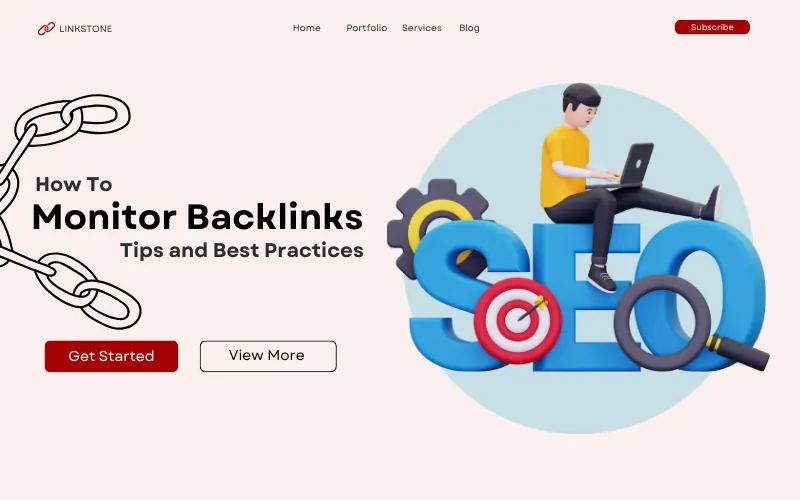
Introduction Backlinks are like digital recommendations for your website, and keeping an eye on them is essential. You might be gaining new links or losing valuable ones without even knowing it. Worse, low-quality or spammy backlinks can quietly hurt your rankings if you’re not paying attention. That’s where backlink monitoring comes in; it helps you stay in control of your SEO progress. In this guide, we’ll explore the tools, methods, and smart habits you need to manage your link profile effectively. Why Backlink Monitoring Matters If you’re serious about SEO, keeping an eye on your backlinks is non-negotiable. Backlinks can boost your visibility, but only if they stay active and clean. Monitoring helps you catch problems early, like broken links or spammy ones that can harm your rankings. Detect Broken or Lost Links Sometimes links to your site disappear without warning. Whether the page was deleted or the link was removed, that’s traffic and authority you’re losing. Regular monitoring helps you spot and recover those lost opportunities. Protect Against Negative SEO Competitors or spammers might point toxic links to your site to bring your rankings down. By tracking new backlinks, you can quickly spot any suspicious activity. Acting fast means you can disavow harmful links before Google notices. Track Competitor Link Building Want to know how your competitors are growing? Backlink monitoring tools let you spy on where their links are coming from. This gives you ideas and helps you spot gaps in your strategy. Measure the Success of Your Campaigns Every time you publish a guest post or run a PR campaign, you hope it gets links. Tracking helps you see exactly which tactics are working. It’s like a feedback loop that sharpens your future efforts. How Backlink Monitoring Works These tools work by regularly crawling the web for mentions of your domain. They log which sites link to you, what anchor text is used, and whether the links are follow or nofollow. You get a snapshot of your backlink profile that updates over time. Monitoring Changes (New, Lost, NoFollow, Anchor Text) You can’t improve what you don’t track. Good tools show you what’s changed: new backlinks, lost ones, and even shifts in anchor text. This helps you stay updated on how your SEO landscape is evolving. Getting Real-Time Alerts and Reports Some tools will ping you the moment a new link is found or lost. This real-time info helps you act fast, especially if something looks off. Plus, easy-to-read reports make it simple to track trends over weeks or months. Best Backlink Monitoring Tools There’s no shortage of tools out there, but a few stand out. Whether you’re on a budget or ready to invest, there’s something for everyone. Let’s look at the top contenders. Google Search Console (Free Option) It’s free and gives you a basic view of your backlinks. While not very detailed, it’s great for getting started. If you’re not using it, you’re missing out on easy insights. Ahrefs Ahrefs is one of the most trusted tools in the industry. It offers deep insights, real-time tracking, and a slick interface. It’s not cheap, but the data quality makes it worth every penny. SEMrush SEMrush is an all-in-one suite that includes backlink tracking. It’s especially useful if you’re running SEO campaigns and want everything in one place. The data is accurate, and the platform is user-friendly. SE Ranking SE Ranking balances price and performance well. You get backlink updates, website audits, and competitor research in one tool. It’s perfect for freelancers and small agencies. Monitor Backlinks As the name suggests, this tool focuses solely on backlinks. It’s clean, straightforward, and gives great alerts. Great for users who want something simple and focused. Linkody Linkody is known for its ease of use and affordability. It sends daily updates and has a dashboard anyone can understand. Ideal for beginners and budget-conscious marketers. LinkBox LinkBox combines backlink monitoring with link management. You can group and label links, making it easy to stay organised. It’s a great tool if you’re managing links for multiple clients. OpenLinkProfiler It’s a free tool that’s surprisingly capable. You won’t get the deepest data, but it’s enough to monitor basic backlink activity. Perfect for early-stage bloggers and solopreneurs. Brand24 Brand24 is more of a media monitoring tool, but it catches backlink mentions too. It’s helpful if you care about both SEO and brand visibility. Good for PR teams and marketers. Ubersuggest Neil Patel’s tool offers backlink tracking along with keyword research. It’s not as powerful as Ahrefs, but it’s great for startups. Additionally, it offers a free version to test the features. Choosing the Right Backlink Tool Start by thinking about your needs. Are you an agency, a blogger, or a business? Your budget, goals, and team size all matter when picking a tool. Don’t just go for the biggest name go for what fits. Compare Features (Alerts, Metrics, Competitor Tracking) Look at what each tool offers: do you want email alerts, anchor text tracking, or competitor insights? Not all tools offer everything. List your must-haves before signing up. Evaluate UI and Reporting Options Some tools offer amazing data but with clunky dashboards. Pick something easy to navigate and that explains things clearly. Good UI saves you hours in the long run. Free vs. Paid Tools: What’s Worth Paying For? Free tools are good to start with, but they often miss key features. Paid tools offer better accuracy, more alerts, and competitor data. Consider it an investment, not a cost. How to Use Monitoring Data Effectively Tracking links is step one, but what you do with the data is where the value is. Identify patterns, spot weak spots, and double down on what’s working. Let the data guide your link building game. Fix Broken or Lost Backlinks Use the tools to find which links have vanished. Then, reach out to the site owners and ask them to restore it. You can often recover valuable links just by asking. Disavow Toxic or Spammy Links If
PBN Backlinks: Risks, Benefits, and Expert Insights
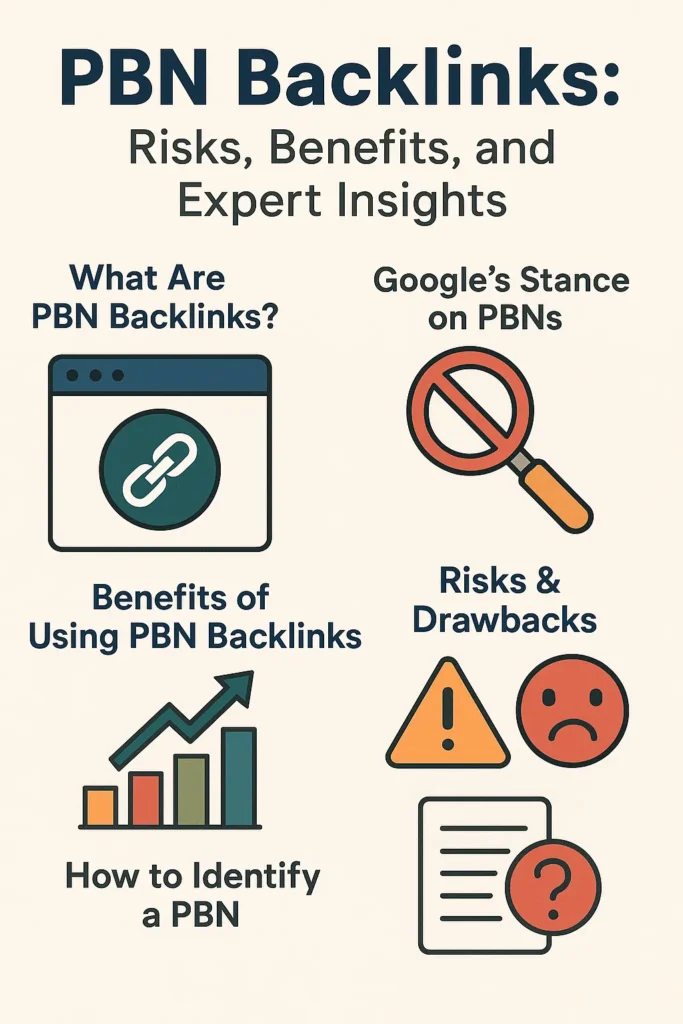
What Are PBN Backlinks? Definition & Purpose PBN backlinks originate from private blog networks, a group of websites created solely to pass link juice to a target site. These sites are often built using expired domains with existing authority, and their primary purpose is to manipulate search engine rankings. How Private Blog Networks Work SEOs purchase aged domains with backlinks and repurpose them with new content. Then, they link to their money sites using exact match or partial match anchor texts. These backlinks look organic to crawlers, but to Google, this can raise red flags if not done carefully. Google’s Stance on PBNs Search Console & Link Spam Updates Google has explicitly warned against manipulative link schemes, and PBNs fall squarely into this category. Updates like Penguin and the more recent Link Spam Update are designed to devalue such links or penalise websites benefiting from them. Historical Penalties In 2014, Google famously deindexed entire PBNs overnight. Even today, many SEOs report sudden drops in traffic due to manual actions or algorithmic detection of shady link patterns. Benefits of Using PBN Backlinks Full Control Over Anchor Text & Placement One of the biggest attractions of PBNs is control you decide what anchor text to use, where to place the link, and how many links to send. Short-Term Ranking Boosts (Case Study) In several anecdotal cases, PBNs have helped sites jump from position #12 to the first page in under 4 weeks. One affiliate marketer saw a 42% increase in organic clicks within 30 days by leveraging 5 strong PBN links. Risks & Drawbacks Manual and Algorithmic Penalties Google is getting smarter. If your backlink profile looks unnatural or heavily reliant on a cluster of PBN links, you risk manual action, deindexation, or algorithmic suppression. Cost, Maintenance & Reindexing Risks Running PBNs isn’t cheap; you pay for domains, hosting, content, and reindexing. And even then, Google might eventually devalue them. Brand Reputation & Ethical Impacts If your site gets exposed for using PBNs, it can damage your brand’s trust. Agencies working with clients need to be particularly cautious. How to Identify a PBN Low-Quality Content & Footprints Most PBN sites have generic or spun content, lack social signals, and follow predictable link patterns. A sudden influx of links from sites with similar designs is also suspicious. Link Patterns & Hosting Similarities Using the same IPs, nameservers, or content themes across domains can create detectable footprints. Tools like Majestic, Ahrefs, and SEMRush can help spot these. Tools & Indicators Myths vs Facts About PBNs “PBNs Don’t Work Anymore” They do temporarily. But unless they’re high-quality and used with extreme caution, their long-term sustainability is poor. “All PBNs Are the Same” False. Some PBNs are built with authority sites, active social media, and great content, while others are nothing more than expired domains with spun junk. Safer Alternatives to PBNs Guest Posts & Outreach High-authority guest posting remains one of the most reliable white-hat strategies. You earn links by offering real value and building relationships. Digital PR & Content Marketing Media mentions, data studies, and viral content bring natural backlinks from big publishers without gaming the system. Infographics, Social Signals, and Communities Platforms like Reddit, Pinterest, and niche forums allow your content to gain organic traction, bringing real backlinks over time. If You Still Consider PBNs: Best Practices Pick Aged Domains with Clean History Use tools like Wayback Machine and Ahrefs to check if a domain was previously spammy. Avoid anything with pharmacy or casino links in its history. Vary Anchors & Diversify Link Profile Avoid keyword stuffing. Mix in branded anchors, generic phrases, and even naked URLs. Monitor with Ahrefs, Moz, and Search Console Keep track of your backlinks, lost links, and anchor diversity. If something looks unnatural, be proactive. Have an Exit/Disavow Strategy Always be ready to disavow risky links if penalties hit. Maintain a clean, updated disavow file in Search Console. Conclusion & Final Recommendation PBN backlinks can work, but they come with serious risks. For beginners or brands that rely on long-term organic growth, they are often not worth the gamble. If you’re considering PBNs, make sure you understand the consequences, diversify your link profile, and combine them with white-hat strategies to reduce footprint. Want sustainable rankings? Focus on content, outreach, and authority. Frequently Asked Questions (FAQs) About PBN Backlinks Are PBN backlinks legal to use? Yes, PBNs are not illegal, but they violate Google’s Webmaster Guidelines. This means Google can penalize your site or devalue your links if it detects manipulative tactics. Do PBN backlinks still work in SEO today? They can work in the short term, especially in low-competition niches. But the risk of penalty and long-term instability makes them unreliable as a core SEO strategy. How does Google detect a PBN? Google looks for patterns like hosting similarities, repeated anchor text, thin content, or sites that only exist to link out. Tools like Ahrefs or Majestic can also help uncover such footprints. Can I buy PBN backlinks safely? No PBN is ever 100% safe. However, if someone is determined, they should choose links from high-quality, well-maintained PBNs with unique IPs, niche relevance, and real content, and even then, proceed with caution. What’s the best alternative to PBN backlinks? Focus on guest posting, editorial mentions, digital PR, and content marketing. These not only improve rankings but also build brand authority without risking penalties. Should agencies use PBNs for their clients? Highly discouraged. A Google penalty on a client site can destroy trust and lead to contract loss. Agencies should prioritise white-hat strategies for long-term results.
Proven Ways to Check and Improve Your Website Ranking on Google

Introduction If you’ve ever typed your brand name or main keyword into Google and wondered, “Where is my site?”, you’re not alone. It’s a common concern, especially when you’re putting in so much work and still feel invisible in the search results.Good news? You can check and improve your website ranking in Google, and yes, you can improve it without becoming a technical SEO expert. Let’s walk through the real-world steps that help. 1. Figure Out Where You Currently Stand Before trying to improve anything, you need to know how you’re doing right now. Think of it like checking your weight before starting a diet; you can’t track progress without a baseline. Google Search Console (GSC) If you haven’t connected your website to GSC yet, do that first. It shows you It’s free, direct from Google, and surprisingly powerful once you start using the filters. SEO Tools (Paid & Free Options) If you’re after more detailed insights, tools like Ahrefs, SEMrush, and Moz can show you rankings, keyword clusters, and even compare your position against competitors.No budget? No problem. Tools like SERPRobot or SerpMiner offer free rank checking for a few keywords. 2. Do Some Keyword Research (The Right Way) Most beginners pick keywords based on gut feeling, not a smart move. Your content needs to match what your audience is searching for. Start with Intent Are people looking to buy, learn, or compare? Use tools like Google Keyword Planner or Ubersuggest to dig into keyword intent.Tip: Long-tail keywords (like “how to check and improve website ranking on Google for free”) usually convert better and are easier to rank for. Don’t Ignore Questions People often search for questions. Use “People Also Ask” boxes or AnswerThePublic to find actual user questions, then use those as subheadings in your blog posts. 3. On-Page SEO: Fix the Basics Even solid content struggles to rank if on-page SEO is ignored. This is where most people make avoidable mistakes. Titles & Meta Descriptions Your title tag should include your focus keyword, ideally at the beginning.Meta descriptions? Write them like mini-ad copy. Keep it under 160 characters and make it clickable. Headers and Structure Use H1 for your main title, H2 for key sections, and H3s to support subtopics. Don’t stuff keywords; keep it natural. Image Optimization Add alt text that actually describes the image (and naturally includes a keyword if relevant). Also, compress images to keep your page fast. Internal Links Think of your website like a spiderweb; everything should connect. Link to related posts or services using relevant anchor text. 4. Publish Better Content, Not Just More Google’s no longer ranking posts that are just “good enough.” The content needs to solve real problems or answer real questions better than what’s already ranking. Go Deeper Instead of writing 500 words on a topic, go further. Add stats, visuals, comparisons, quotes, anything that adds depth and shows expertise. Keep It Up to Date Old posts don’t automatically stay ranked. Update your content every few months, tweak the headline, add new data, or replace outdated info. Make It Easy to Read Short paragraphs, clear language, and real examples are the kind of content people (and Google) love. 5. Don’t Sleep on Technical SEO This might sound intimidating, but don’t worry, some of the most important fixes are easy to handle. Mobile Usability Run your site through Google’s Mobile-Friendly Test. More than half of all searches are mobile now. If your site isn’t responsive, rankings will suffer. Speed Matters Use PageSpeed Insights or GTmetrix to test your load times. Compress images, eliminate unused scripts, and consider a caching plugin if you’re on WordPress. Submit Your Sitemap A sitemap helps Google understand your site structure. Most SEO plugins (like Yoast or RankMath) generate it automatically; just submit it in Search Console once. 6. Backlinks Still Matter (But Quality Beats Quantity) You’ve probably heard it before: backlinks are like votes for your site. But here’s the twist: not all votes are equal. Focus on Authority Getting one backlink from a trusted, high-authority site can be worth more than 50 random directory links.Want a backlink strategy? Try guest posting, broken link outreach, or creating shareable content (like infographics or research). Track Your Link Profile Use Ahrefs or Moz to keep an eye on your backlink health. Look for sudden drops or spammy links and disavow them if needed. Avoid Black Hat Tricks Buying cheap backlinks might give you a short-term spike, but Google’s penalties will destroy your rankings long-term. It’s not worth the risk. 7. Keep Tracking and Improving SEO isn’t a “set it and forget it” game. Rankings change, algorithms update, and competitors level up. Watch Your Analytics Check your Google Analytics regularly to monitor: Track Keyword Positions Set up a weekly report using SEMrush or SerpWatcher to see how your keywords are moving. If something drops, check the content and backlinks, then act. Keep Learning and Adapting SEO changes fast. Follow a few blogs, join a community, and test what works for your industry. FAQs Q: How do I check my website’s ranking for free? Use Google Search Console or a free rank checker like SERPRobot. Q: How long does it take to rank on Google? Depends on the competition, your site’s authority, and content quality. For new sites, 3–6 months is normal. Q: Do backlinks still help in 2024? Yes, but only if they’re relevant, high-quality, and earned naturally. Q: What if I’ve done everything and still don’t rank? Recheck keyword intent, improve content depth, and look at your competitors’ backlinks. Sometimes, just tweaking titles and improving internal links can make a big difference. Final Thoughts You don’t need to be an SEO guru to improve your Google rankings.With the right tools, smart keyword planning, a solid content strategy, and a bit of patience, anyone can compete even with the big names.Start small, stay consistent, and keep learning. Google rewards quality and persistence.
Link Building Pricing: How Much Should You Pay?

If you’re exploring linkbuilding to improve your website’s authority and rankings, you’re probably wondering: How much should I pay?Link building pricing can vary significantly depending on factors such as link quality, niche, domain metrics, and service type. In this guide, we’ll break down common pricing models, real-world examples, and tips to get the best value for your SEO budget. Common Pricing Models Per-Link Pricing (DA/DR-Based Tiers) One of the most popular ways to structure link building pricing is by the number of links, typically based on domain authority (DA) or domain rating (DR). Typical rates: Prices vary depending on the niche, quality of the site, and whether the link is editorial or directory-based. Monthly Retainers Many agencies offer monthly link building retainers: Monthly retainers usually include outreach, content creation, link acquisition, and reporting with set expectations on the number and quality of links. Project-Based Packages If you prefer one-off campaigns, many agencies offer project-based linkbuilding: Perfect for site launches, migrations, or seasonal SEO pushes. Performance-Based Pricing Some vendors offer performance-based linkbuilding tied to traffic or ranking results, but this model is rare and typically used by advanced agencies or in long-term partnerships. What Drives Link Building Prices? Domain Metrics & Niche Relevance Higher DA/DR and niche-relevant sites command higher prices. Links on popular sites in competitive industries (finance, SaaS, health) cost more than generic directory links. Outreach, Content Creation & Management Effort You’re paying for more than a link; the time, expertise, and relationship-building required for top placements drive costs up. Link Quality (Editorial vs Directory/PBN) Vendor Markup & Agency Overheads Agencies typically mark up vendor link cost by 50–100% to cover: Example: A vendor link might cost $150 raw, but be sold for $400 with full service. In-House vs Outsourcing Cost Comparison Building an Internal Team Running in-house linkbuilding can cost ~$177K per year: Agency / Freelancer Costs Pros & Cons of Each Route In-house: More control, higher setup costAgency: Faster results, less internal overhead What You Should Expect to Pay Typical Per-Link Rates by Quality Budget for 15–30 High-Quality Links/Month Building authority typically requires 15–30 links monthly: Reasonable Markups for Full-Service Packages Markups of 50–100% are common when agencies handle content, outreach, QA, and link guarantees. How to Audit Link Building Proposals Before hiring an agency or buying links, audit their proposal: Asking these questions protects your investment and avoids paying for low-value placements. Tips to Get Fair Pricing Ask for Breakdown Link Fee + Service Fee Transparency matters; insist on seeing the split between link cost and service fees. Approve Domains Before Purchase Pre-approve domains to avoid irrelevant or spammy placements. Monitor Link Status & Replace Drops Links may drop naturally; our provider should monitor and replace them as needed. FAQs Why are links per-DA tier priced differently?Higher authority sites require better content, more outreach effort, and publisher relationships. Is $300–500 per link normal?Yes, this is standard for editorial links on genuine sites in competitive industries. Can I get quality links for $100 or less?It’s possible, but typically not editorial links on strong domains. Vet low-cost offers carefully. How long does it take to see results from link building?Generally, 2–4 months, depending on competition, link quality, and how often search engines crawl the new links. Are all backlinks equally valuable?No. Editorial links from high-authority, relevant websites offer much greater value than directory or forum links. Can I just buy a large volume of cheap links?Quantity without quality can harm your site. A few high-quality links will always outperform hundreds of spammy ones. Should I prioritize DR or traffic when buying links?Ideally both. DR indicates authority, while traffic shows real audience engagement. Balanced metrics give the best results. Conclusion Understanding link building pricing helps you set realistic budgets and avoid poor-quality providers. Prioritize: Start small, test partners, and scale what works. A smart linkbuilding investment can drive long-term SEO growth and better rankings.
Best White Label Link Building Services: Updated Guide
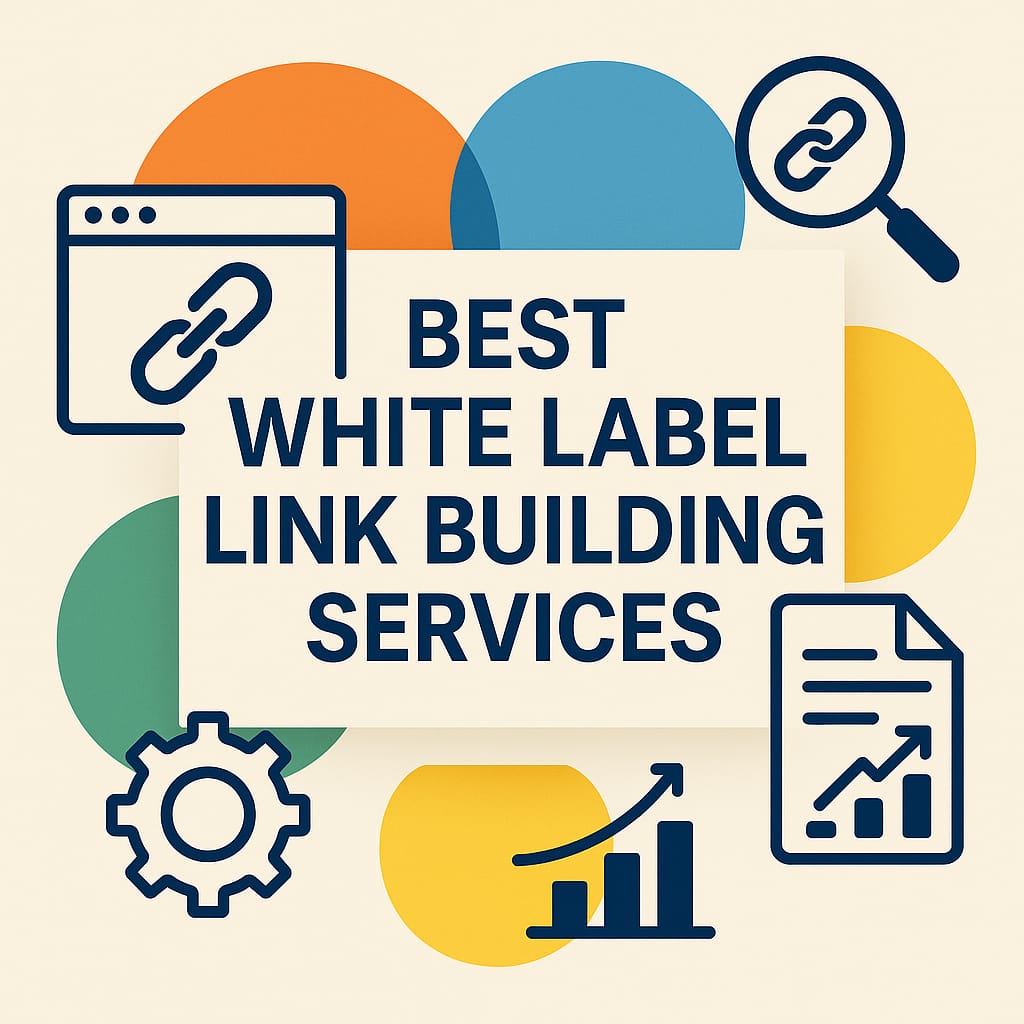
If you’re running an SEO agency, freelance service, or marketing firm, chances are you’ve already explored link-building options. But building high-quality backlinks at scale takes time, effort, and solid outreach. That’s why many smart agencies use white label link building services to handle the hard work while they focus on strategy and client relationships. In this guide, we’ll explore how these services work, what to look for, and which providers are considered the best white label link building services today. Whether you’re scaling your first client campaign or managing dozens of accounts, these insights will help you choose the right solution. What Are White Label Link Building Services? Definition & Key Benefits White label link building services are third-party providers that build backlinks on your behalf, delivered under your brand. This means your clients see your logo and reports, but the outreach, placement, and content work are handled behind the scenes by linkbuilding specialists. Key benefits include: Why Agencies & Freelancers Use Them Agencies and freelancers choose white label link building services for several reasons: Core Features to Evaluate Not all white label link building services are the same. To choose the right provider for your agency, here are some key features to consider: Link Quality & Niche Relevance The foundation of any good link-building strategy is quality over quantity. The best services prioritize: Reporting: White-Label vs Transparent Your clients expect professional reporting. Look for providers that offer: Pricing Models: Pay-After-Publish, Brokerage, Subscription The top white label link building services offer flexible pricing: Transparent pricing is key to avoid any hidden fees or unclear scopes. Top Providers in 2025 Here are some of the best white label link building services you can consider for your agency this year: LinkGraph OuterBox AWISEE Standouts: Boostability, SureOak, Stan Ventures, Page One Power How to Choose the Right Provider Volume Versus Quality Trade-Off Decide if your clients value large volumes of links or if they prefer fewer but highly authoritative placements. Your provider should match this expectation. Budget, Goals & Timeline Integration with Your Brand & Workflow Look for services that fit into your agency’s systems: Pitfalls & Red Flags Cheap Bulk Links vs Strategic Placements Avoid services offering thousands of links for very low prices — these usually rely on spammy tactics that can harm your clients. Hidden Fees or Unclear Scope Read the service terms carefully. The best providers offer clear deliverables, pricing, and timelines without surprises. Response Time & Customer Support Reliable communication is key. Test response times and support quality before scaling your orders. Maximizing Benefits: Best Practices Provide Quality Content or Assets When you supply quality articles, infographics, or resources, providers can secure better placements. Monitor & Verify Live Links Always track your placements using SEO tools — Ahrefs, SEMrush — and confirm that links stay live and indexable. Use Reporting to Show Client Impact Leverage white label reports to demonstrate link-building impact to your clients, improving transparency and retention. Frequently Asked Questions What are white label backlinks? Backlinks built by a third-party provider, delivered under your agency’s brand with no visible outsourcing to the client. Can I get them for free? Most quality white label link building services charge for placement. Free services are often unreliable or of low quality. Is the pay-after-publish model safe? Yes, it’s one of the most transparent ways to pay for white label backlinks. You only pay for links that go live and meet agreed standards. Conclusion Choosing the best white label link building services can help your agency grow while saving time, reducing overhead, and delivering consistent results. Focus on quality, transparency, and fit with your agency’s workflow. Start by testing a few providers, tracking results, and refining your strategy. With the right partner, you can scale linkbuilding and client success faster than ever.
How to Analyze Inbound Links For Your SEO Growth
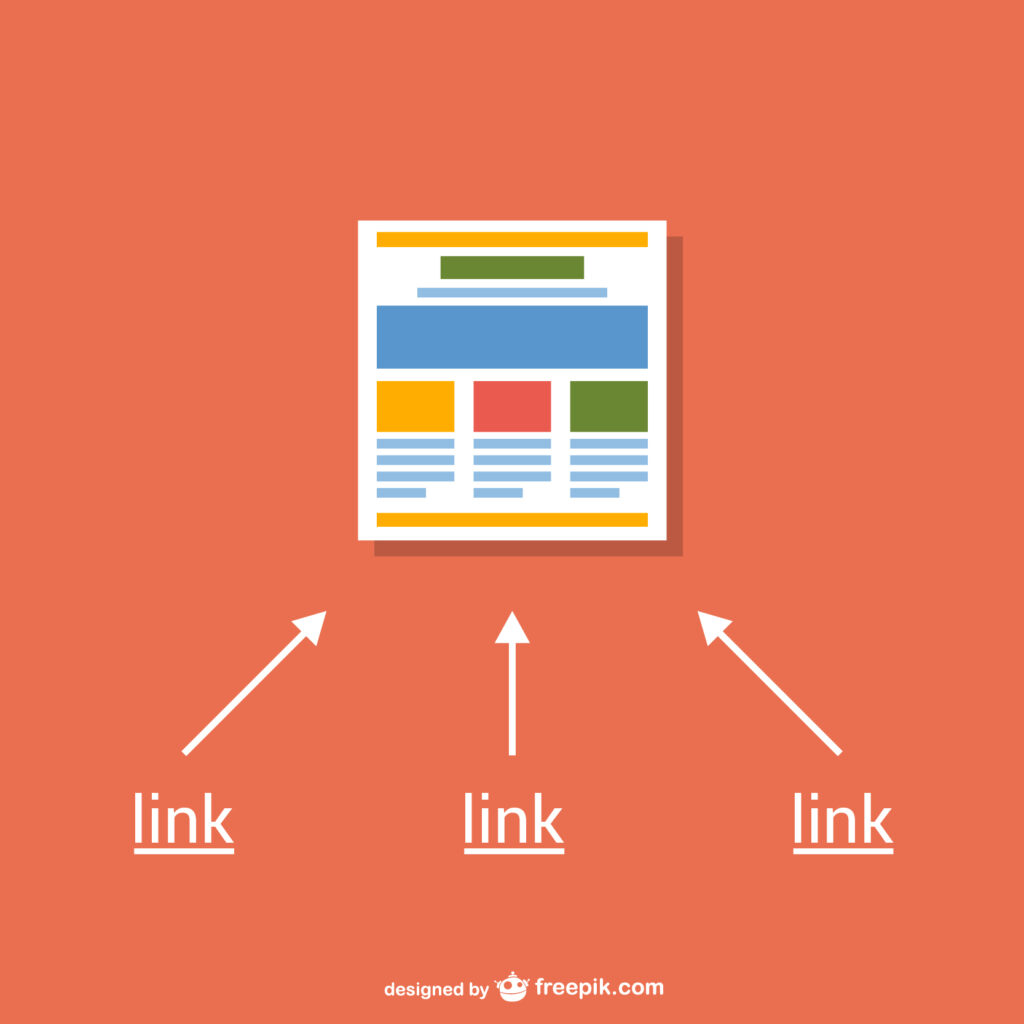
Picture your website as a boss chippy in Liverpool, frying up chips so braw they’d have your nan queuing round the block. Backlinks are like Scousers nattering in the pub, telling Google your scran’s the bee’s knees. The more proper links you’ve got, the more Google reckons your chippy’s legit. But how do you suss out who’s shouting your name? Or nick a peek at rival fryers’ mates? This guide’s your best pal, dishing the mucky tea on sniffing out inbound links with free kit, fancy tools, and proper old-school graft. You’ll also learn to keep an eye on your links and remove the dodgy ones before they tarnish your reputation. 1. Use Google Search Console to See Inbound Links Google Search Console’s your free pass to see who’s bigging up your chippy. Open the “Links” Section Log in to Search Console and click on “Links” on the left side. It’s like peeking at your chippy’s chalkboard for punter love notes dead easy. View Top Linking Sites & Pages The Links report spills: Export Your Link Data Download the lot to a spreadsheet for a proper nosy. It’s like a chippy boss tallying up Friday’s takings to spot what’s hot. 2. Use SEO Tools for Deeper Backlink Analysis Want to dig deeper? SEO tools are like your chippy’s shiny new fryer they do the graft for you. Ahrefs Site Explorer Shove any website into Ahrefs’ Site Explorer. A mate of mine found a food blog linking a rival chippy but not his cheeky! He emailed ‘em a better tip and nabbed a link. You get: SEMrush Backlink Analytics SEMrush’s Backlink Analytics lays out your full link profile. It’s the Backlink Gap Tool’s ace for spying on rivals. Found a blog they’ve got, but you don’t? Fire off a guest post pitch like, “Fancy a chippy recipe post?” Moz Link Explorer Moz dishes out Spam Score, Domain Authority (DA), and Page Authority (PA). Suss out if your links are sound or proper. Check anchor texts to keep ‘em natural. Other SEO Tools SE Ranking, Monitor Backlinks, Ubersuggest, and Sitechecker fling you link reports with pings for new or lost links. Test their free trials like you’d test a new chippy sauce dip in first. 3. Use Free Backlink Checkers (If You’re on a Budget) Proper skint? Free tools are like a chippy’s free taster nowt fancy, but gets you started. Ahrefs Free Backlink Checker Shows your top 100 links lush for a quick gander at who’s chatting about your chippy blog. SEMrush Free Account You receive basic link reports, similar to a small chip portion. Not the full scran, but enough to scoff. SEO Review Tools Quick link summaries with no faff ace for newbies who just want a peek without signing their life away. 4. How to Find Competitors’ Backlinks Fancy nicking tricks from rival chippies? Spy on their linkmates. Enter Competitor Domain in a Tool Chuck a rival’s website into Ahrefs or SEMrush. You’ll see their backlinks, like spotting which blogs rave about their soggy fish. Analyze Referring Domains Suss out where their links come from: food blogs, directories, or forums. If a blog’s linking them, it might fancy your chippy with a cheeky pitch. Use Backlink Gap Tools SEMrush’s Backlink Gap Tool shows links your rivals have that you’re missing. It’s like peeking at their secret batter recipe then making yours better. Export and Build Outreach List Download their list and plan a charm offensive. Email blogs: “Hiya, loved your chippy post! My curry sauce guide’s a belter, fancy a link?” It’s like stealing punters with crispier chips. 5. Manual Methods to Track Backlinks No cash for tools? Go proper old-school, like frying chips over a fire. Use Google Analytics Head to Acquisition > All Traffic > Referrals in Analytics. A pal’s chippy found a food forum sent 30 punters his way turned out to be a cracking link he’d missed. Shows real traffic from links, not just Google fluff. Check Referrer Logs in cPanel Your hosting’s cPanel might log where links come from. It’s like flipping through your chippy’s guestbook to see who’s popped in. Try Google Search Operators Type yourchippy.com or “yourchippy.com” -site:yourchippy.com into Google. Results are a bit wonky, but you might spot a blog linking you. It’s like rummaging for a chip stuck in the fryer takes patience. 6. Audit the Quality of Your Backlinks Not every link is a winner; some are pure garbage. Audit ‘em like a chippy health inspector. Check Domain Authority (DA) Higher DA (via Moz) means a proper link, like a food mag vs. some random blog. Review Spam Score High Spam Scores scream trouble in those links like a batch of burnt chips. Check Niche Relevance Links should vibe with your chippy food blogs, not tractor sites. Dofollow vs Nofollow Dofollows give Google love; nofollows pull punters. Both are sound for a natural mix. Analyze Anchor Text Keep anchors natural, like “lush chips” or “check this” not stuffed like a bad kebab with “best chippy ever.” 7. Handle Toxic or Spammy Backlinks Got links stinkier than week-old fish? Sort ‘em sharpish. Identify Toxic Links Use Ahrefs or SEMrush to spot links from spammy sites, link farms, or weird pages (e.g., a casino linking your chippy dodgy!). Create a Disavow File List the bad domains in a text file, like shadybet.com. It’s like barring rowdy punters from your chippy. Upload to Google Disavow Tool Send the file via Google Search Console to tell Google to ignore ‘em. It’s like scrubbing your fryer till it sparkles. 8. Monitor Backlinks Over Time Keep tabs on links like a chippy boss eyeing the till. Set Link Alerts Ahrefs or SE Ranking pings you for new or lost links, handy as a bell when punters walk in. Track Key Metrics Watch: Export Monthly Reports Download tool reports to review, like checking your chippy’s stock before a big Friday. Final Thoughts: Mix Manual & Tool-Based Tracking Don’t bet on one trick blend tools
